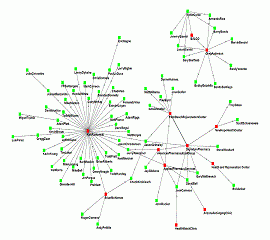Over the last few years I have been kicking around an idea that helps identify an important characteristic that will be necessary in any successful supply chain pedigree or track and trace technology/regulation. I can sum it up as follows:
When regulations mandate that a product’s value is determined by the ability to show, at any time, specific information about the product’s history, then the buyer of that product must receive all of the necessary information from the seller at the same time the product is received.
Take, for instance, a secondary wholesaler in Florida today. Florida requires a secondary wholesaler to be able to show an inspector a complete pedigree for any prescription drug in their possession. If the wholesaler cannot show the proper pedigree, then the product cannot be sold in Florida. The value of the item is reduced, perhaps to zero. If this drug-without-a-pedigree can legally be shipped to sites or customers outside of Florida the reduction in value is equal to the cost of the extra shipment, extra handling and perhaps a temporary out-of-stock situation until the unexpected loss can be backfilled (and possibly a fine).
Now imagine what would happen if there were no other place to legally ship drugs whose pedigree information is unavailable when called upon. The value of the drugs would certainly be zero, or worse. That’s a risk that can be avoided by ensuring that all of the information necessary for the pedigree is in the possession of the secondary wholesaler at the time they purchase the drug.
What would cause the information to not be available? Some technical approaches to maintaining pedigree information under discussion within the industry right now might result in something I call a “distributed” pedigree. That is, one that is stored across multiple organizations; the previous owners of the drug. When it is necessary to show a complete pedigree–to an inspector, a law enforcement organization, or just to a buyer–these other organization must be called upon to provide their part of the pedigree. The occasion that leads to the need to show a complete pedigree will probably occur somewhat unexpectedly (especially in the instance of a regulatory inspection or a law enforcement action). If one or more of the organizations holding part of the pedigree information are temporarily or permanently unable to provide their part of the pedigree, the product cannot be sold and thus has lost all of its value.
The real problem with a distributed pedigree occurs when the supply chain extends beyond just two trading partners. For example, the third owner of a drug in the supply chain probably doesn’t have any business relationship with the manufacturer (the first owner). That’s why they bought the product from the second owner. There is probably no contract between the current owner of the drug and the previous owners (except the most recent seller) so there is no way to ensure that these earlier owners will provide their necessary components to the pedigree when it is called for.
The solution is to make sure that all of the necessary data for the pedigree is always supplied by the seller at the time of purchase. That way, if any of the earlier owners have technical (or other) difficulties that prevent them from being able to serve up data, it won’t affect the value of the drugs that are downstream in the supply chain. In short, a “distributed” pedigree won’t work.
I believe this concept is a corollary to the fundamental law of commerce known as “Buyer Beware”. Transmitting a full pedigree at the time of the sales transaction is one way of arming the buyer with sufficient information so they can beware.
 GS1 US is dedicated to expanding the adoption of GS1 Global’s standards for supply chain interaction in the U.S. market. Almost every country in the world has a GS1 “Member Organization” (M.O.) that is dedicated to the same thing within their borders. With the local M.O.’s primary focus on driving adoption, their most valuable tool is that country’s government. If they can get the government to reference GS1 standards in their laws, their work is much easier.
GS1 US is dedicated to expanding the adoption of GS1 Global’s standards for supply chain interaction in the U.S. market. Almost every country in the world has a GS1 “Member Organization” (M.O.) that is dedicated to the same thing within their borders. With the local M.O.’s primary focus on driving adoption, their most valuable tool is that country’s government. If they can get the government to reference GS1 standards in their laws, their work is much easier.


 “…[C]ommencing on July 1, 2016, a wholesaler or repackager may not sell, trade, or transfer a [prescription] drug at wholesale without providing a pedigree.
“…[C]ommencing on July 1, 2016, a wholesaler or repackager may not sell, trade, or transfer a [prescription] drug at wholesale without providing a pedigree.